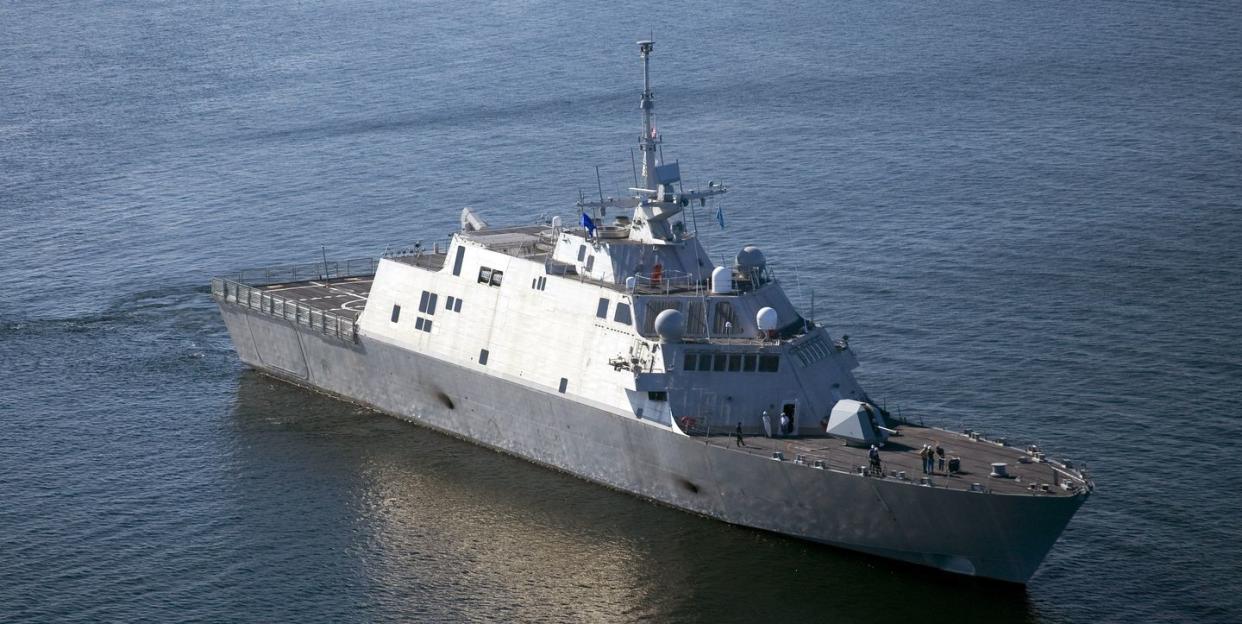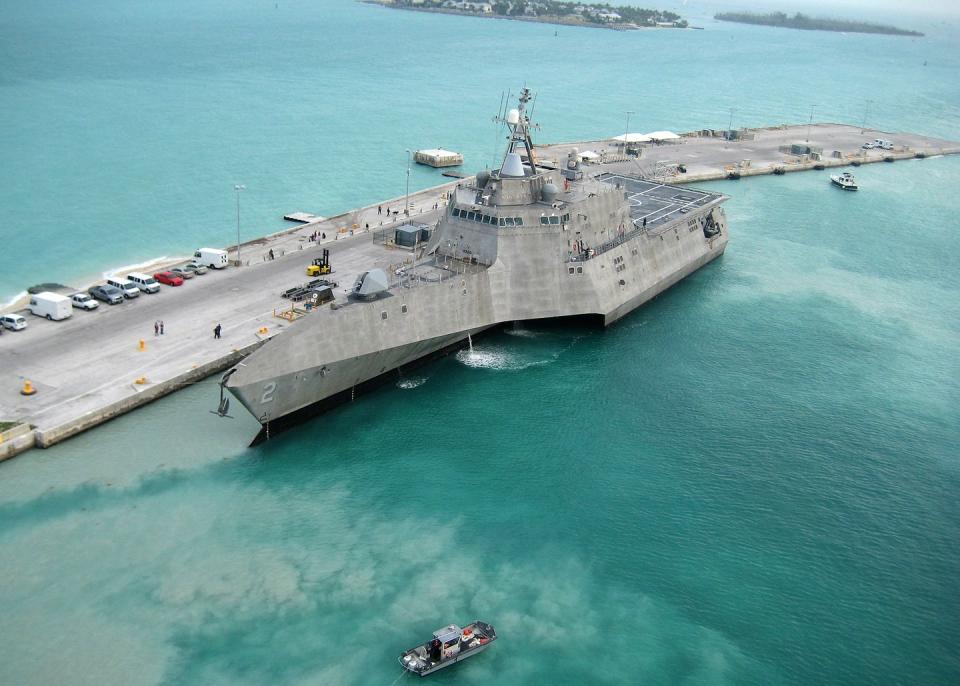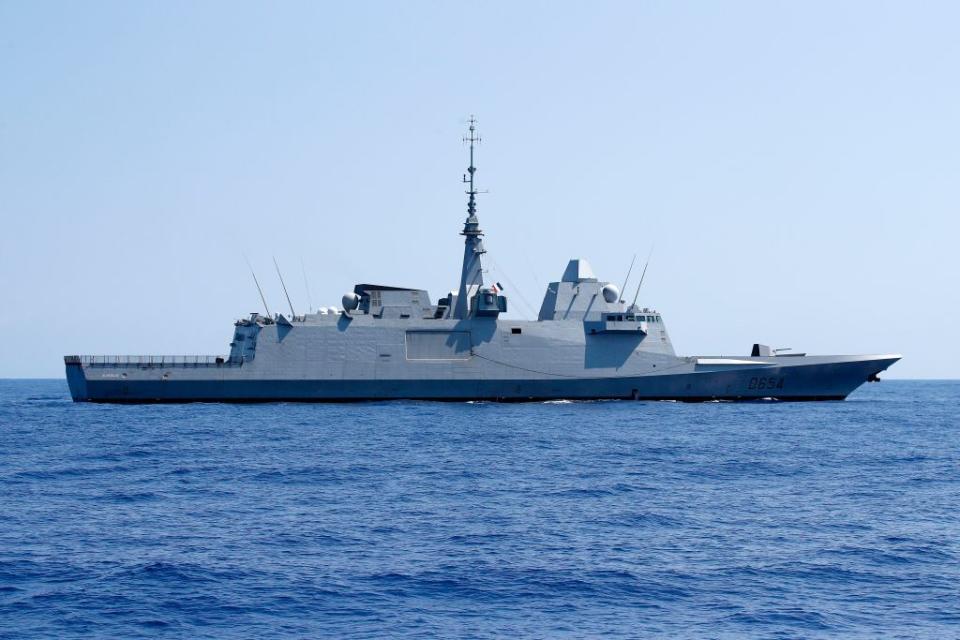The Navy Wants to Retire a Ship That's Only Six Years Old

The U.S. Navy has unveiled plans to retire the first four Littoral Combat Ships, the youngest of which is only six years old.
The LCS program has been problematic for more than a decade, with the lightly armed ships coming in over budget and with technical problems.
The entire LCS fleet could eventually go on the chopping block as a new class of frigates comes online in the mid 2020s.
The U.S. Navy wants to retire four ships of the controversial Littoral Combat Ship class, including one ship that is just six years old. The four ships all have at least 10, if not 20 years of service in them but are currently non-deployable test ships not rated for combat. It’s unclear why the Navy wants to dump them when at the same time it is trying to reach a fleet of 355 ships by 2030.
The Navy wants to retire the first two ships from the Freedom class of Littoral Combat Ships, USS Freedom (above) and Fort Worth, commissioned into the fleet in 2008 and 2012, respectively. It also wants to retire the first two ships of the Independence-class. USS Independence, the lead ship in the class, was commissioned in 2010. USS Coronado was just commissioned in 2014, making it less than six years old.
The Littoral Combat Ship (LCS) program has been fraught with problems since its conception in the early 2000s. LCS was originally inspired by the concept of a small (500 ton), nimble, heavily armed “Streetfighter” of a ship capable of duking it out with large ships while operating in coastal regions and island chains. This gradually morphed into a much larger ship, lightly armed, and equipped with interchangeable, self-contained “mission modules” that allowed it to become a submarine hunter, minesweeper, ship-killer, or commando transport within hours.

LCS was an ambitious program. One ship, forward deployed in the South China Sea for example, could swap modules to fulfill different roles without having to return to the U.S. to undergo an expensive and time-consuming refit—at least that was the theory.
A series of design problems proved major shortcomings. The Navy prioritized ship speed (up to 47 knots, or 54 miles an hour) over range, which made LCS less useful in countering the fleets of great powers such as China and Russia. The ships, as Task & Purpose points out, suffered a series of high profile breakdowns and embarrassing cost overruns the Pentagon tried to conceal from the public. The ships have scarcely more armament than a Coast Guard cutter, relying on the mission modules to supply anti-submarine and anti-ship weapons, and they were only capable of defending against aerial threats to the ship.
Another major problem: after more than a decade of development none of the mission modules are fully operational. The high performance engines that gave the ships blazing speed at sea proved troublesome, so much so that in 2016 the Navy took the first four ships out of frontline service and turned them into test ships for the rest of the LCS fleet. The remaining 12 hips of the LCS fleet, lacking the mission modules that gave them purpose, have for years been unable to deploy to fulfill the key missions.
The early decommissioning of the first four Littoral Combat Ships is a bad look for the Navy. The Navy is desperately trying to hold onto its plan to increase the fleet to 355 ships, and decommissioning four ships—one only six years old—runs completely contrary to that plan. It is surprising that the U.S. Navy cannot find the justification to keep these ships in service until at least until 2030, even continuing to use them as training or light duty vessels.

This is probably the beginning of the end of the Littoral Combat Ship program. The U.S. Navy is preparing to build a new guided missile frigate, FFG(X), and the shipbuilding budget for 2021 is 20 percent less than 2020’s. The Navy is being squeezed for cash, and it seems likely that LCS, still without mission modules, will be retired as the new frigates roll out of shipyards. The only saving grace for the LCS is if the FFG(X) program also balloons in cost and experiences delays. Sadly, that's not an inconceivable scenario.
You Might Also Like
